Best cycling socks: Breathable, fashionable, and well-made options for your feet
Our pick of the very best cycling socks to keep your toes happy through the hotter months
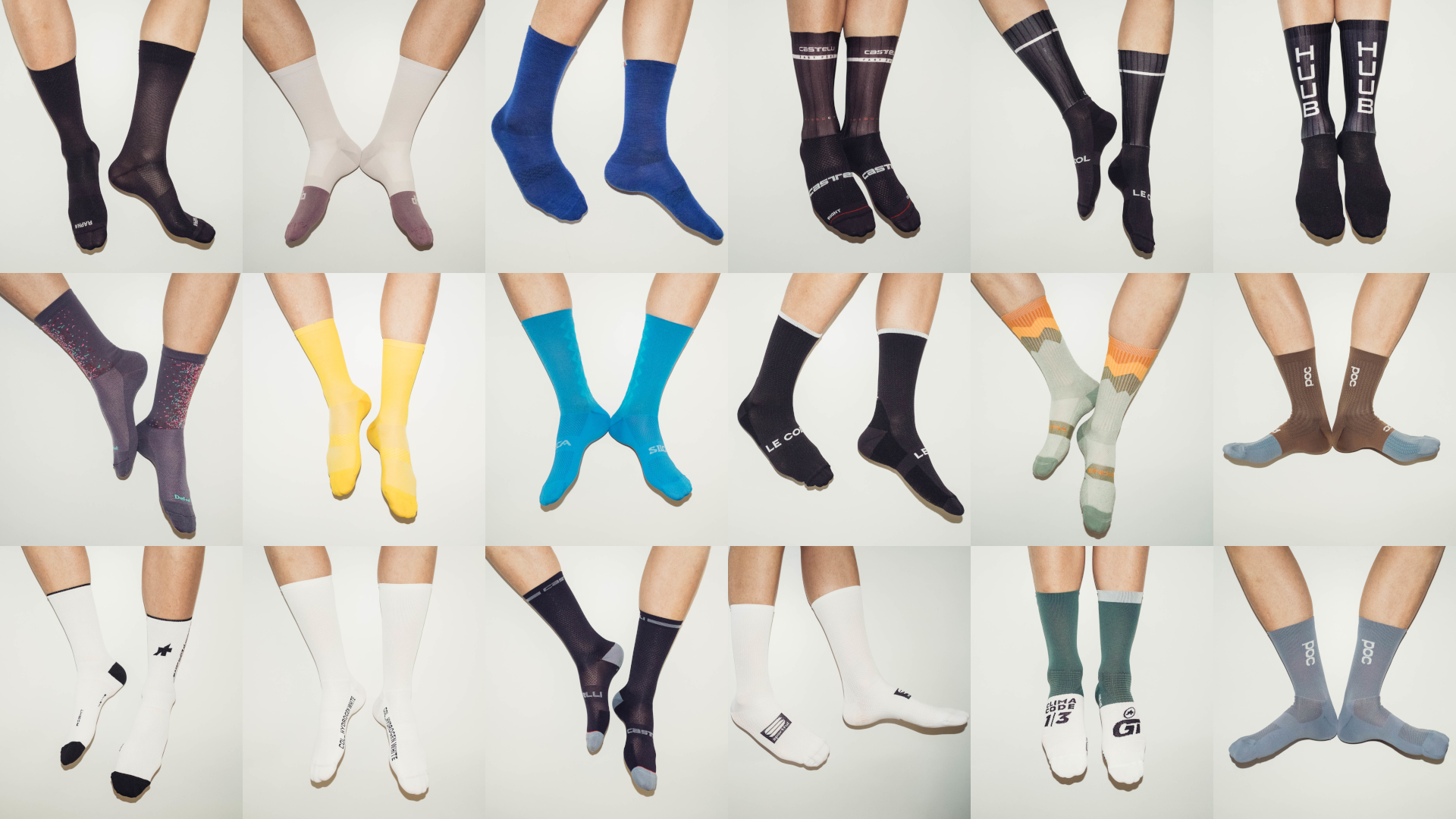
Socks, for some reason, are important to cyclists. Yes, some claim to offer tangible wattage gains, but for most of us, choosing the best cycling socks is purely an aesthetic decision.
While the performance differences between cycling socks are relatively minor, the key thing to think about is breathability. If you are either riding somewhere extremely hot, or you are a naturally sweaty rider (or both!) then look for one of the more breathable options. In the winter when you'll be after some of the best winter cycling socks, performance differences are more noticeable, but for summer use you can basically pick whatever you fancy and they'll perform well enough.
For most riders, any of the general-purpose options will do. Most also come in a wild array of colours, so finding a set to match your cycling jersey should be an easy task.
The best cycling socks you can buy today
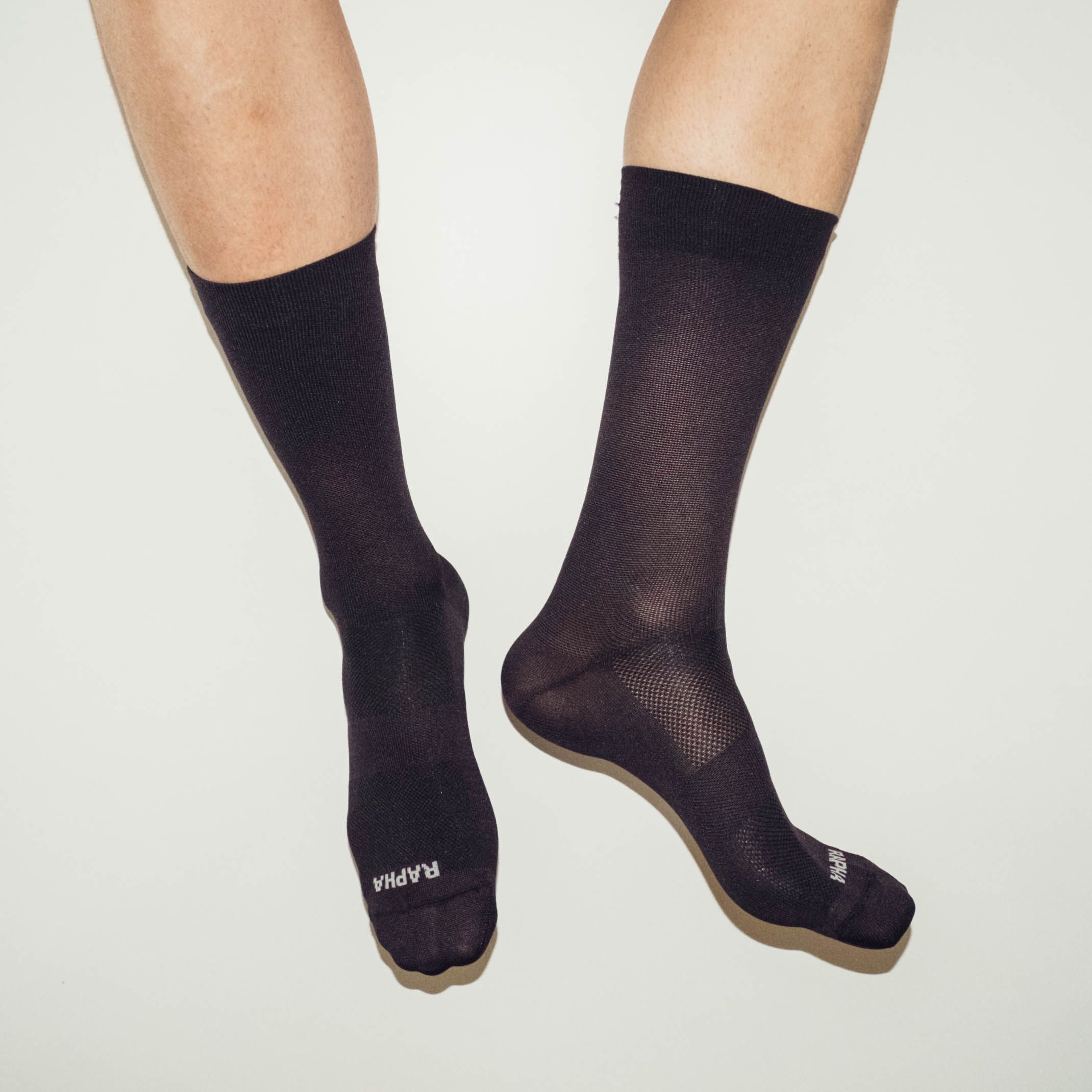
Best Overall
➕ Hardwearing
➕ Comfortable
➕ Simple design
➖ Extra long version is very tall
I've used the Rapha Pro Team socks for years. I've had one pair that's approaching 7 years old, and I only stopped using it because I lost one of the pair. These are a brilliant middle-ground sock that fits well, has a wide, comfortable cuff, and isn't crazy money either. You can get them in three heights depending on your preference; mine is the extra tall. In short, these are the benchmark when you consider everything in the round.
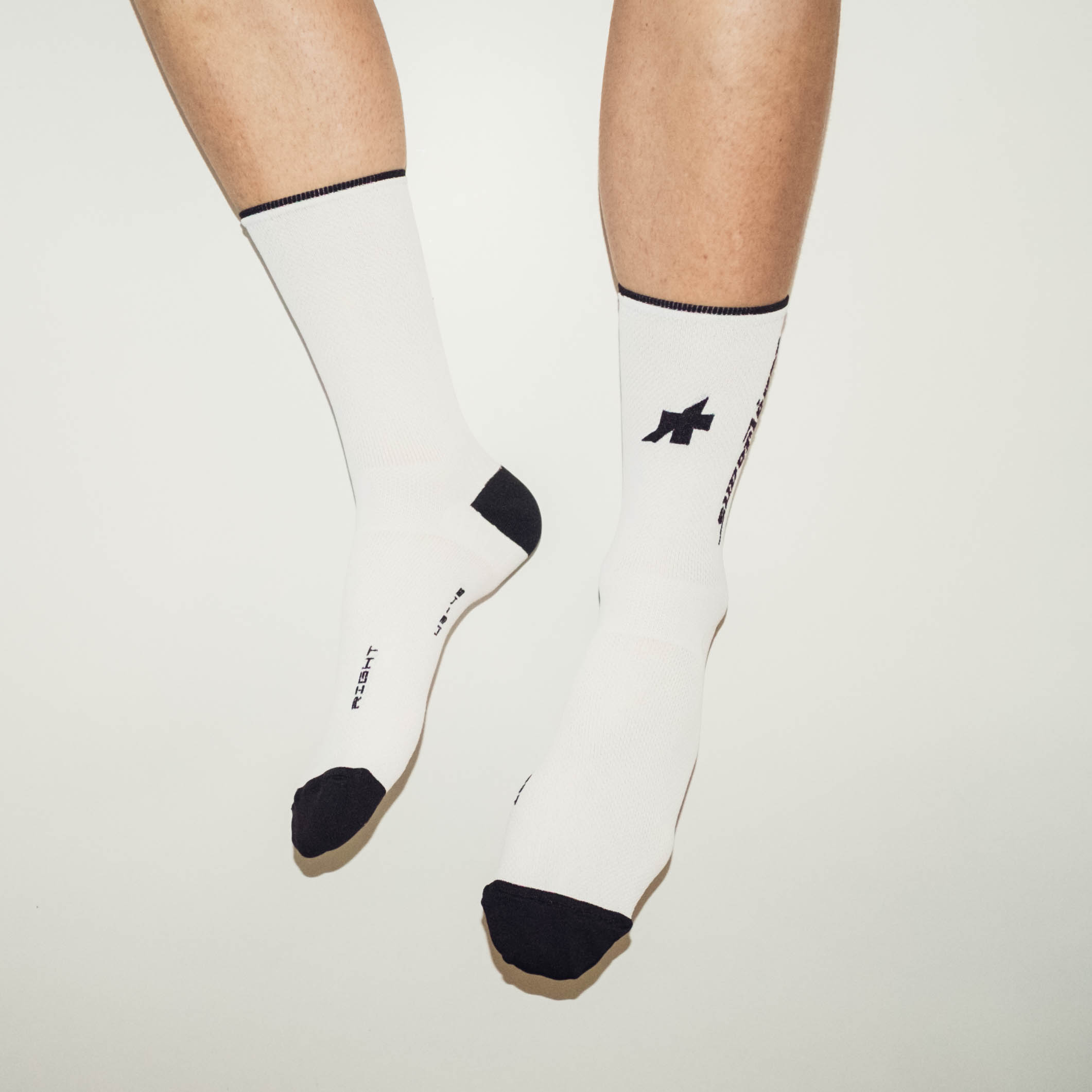
Most Breathable
➕ Hyper-breathable
➕ Incredibly light
➖ A little flimsy
If you're riding indoors, riding anywhere hot, or sticking your feet in an oven then these are the socks for you. They are the most meshy, most breathable socks out there, both on the foot and the cuff, with only a couple of bands around the heel that modify the fit in areas of articulation. Despite the lack of a mid-foot band and a very narrow gripper at the top of the cuff, they fit incredibly well, with an all-over snug feeling. Just don't go riding near foliage; they're a definite snag risk.

Many Designs
➕ More colour choices than you can shake a stick at
➕ Good value
➖ No mid-foot band
One for the flamboyant riders amongst you, the DeFeet Aireator comes in a dizzying array of colours and designs, all for a pretty decent price. Not so cheap as the dhb Aeron, and not so snug either, but if you want speckles, skulls, stripes, or near enough anything else then these are probably going to be the socks for you. Like the Rapha Pro Team, I've had pairs of these last years, so no need to fret about durability.

Luxury Option
➕ Wool is tremendously comfy
➕ Multi-day capable
➖ Fluffy look perhaps not for everyone
The Velocio Signature Wool socks are great for cooler mornings as they're a little warmer, but still perfectly happy when it gets warmer too. Not when it's pushing 30 degrees, but certainly the 20's are fine. The wool content means they're baby soft, and don't stink up nearly so fast if you're riding for multiple days. Give wool a chance, you may be converted, as long as your riding mates don't belittle the fluffy halo that can develop over time. These were good enough over such a temperature range they even snuck into our guide to the best winter cycling socks too!
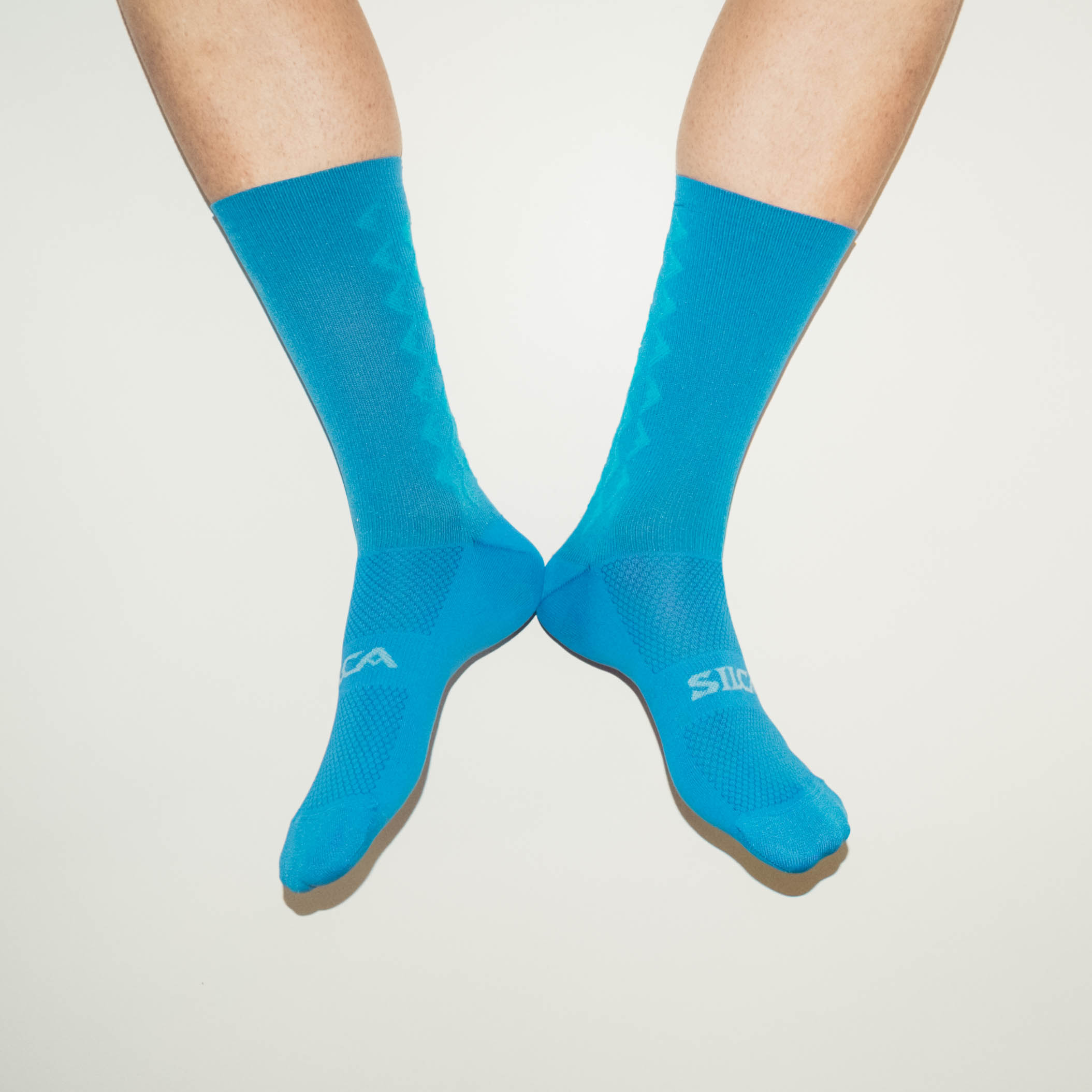
Aero Gains
➕ Aero gains
➕ Still looks like a normal sock
➖ Expensive
While we've got three aero cycling socks below with Lycra cuffs, they have a certain look that not everyone is on board with. The Aero Socks from Silca claim to save you 4-8 Watts, thanks to the textured V's on the rear that help the air detach. While these tall options come in fewer colours, the regular height option comes in a lot more options so you can have an aero and a style cake and eat them both.
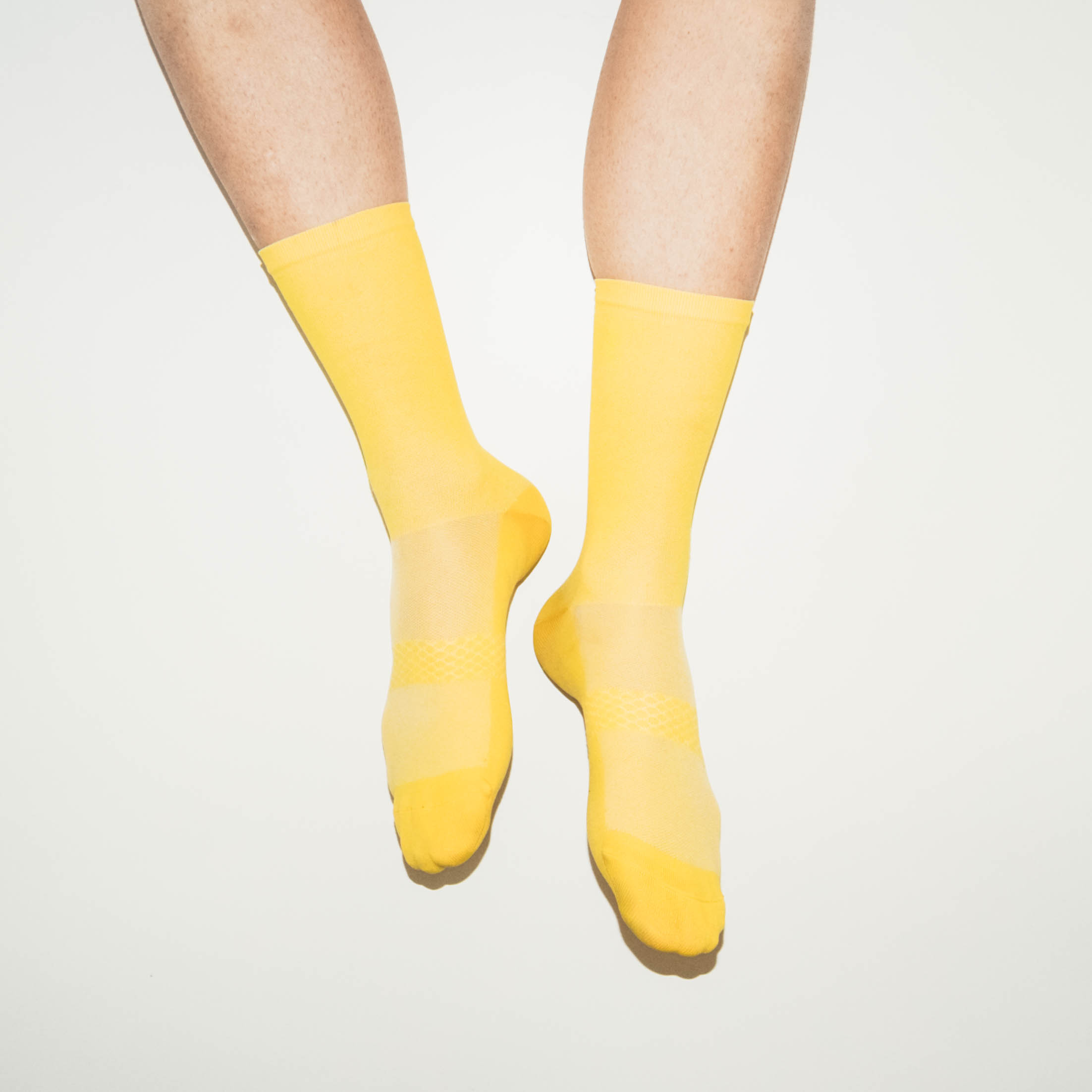
Block colour
➕ Great colour options
➕ Well constructed
➖ Simple construction
It's ok to buy socks purely for aesthetic reasons, and if it's block colours you're after then the Signature Sock from Velocio has the best colour palette of the bunch. Everything from pastel blues and pinks, through olive greens, to bright yellows and reds are catered for. They're not hugely expensive in the context of the market, and are similar in feel to the Rapha Pro Team, but the construction is a little more simple, with no height options.
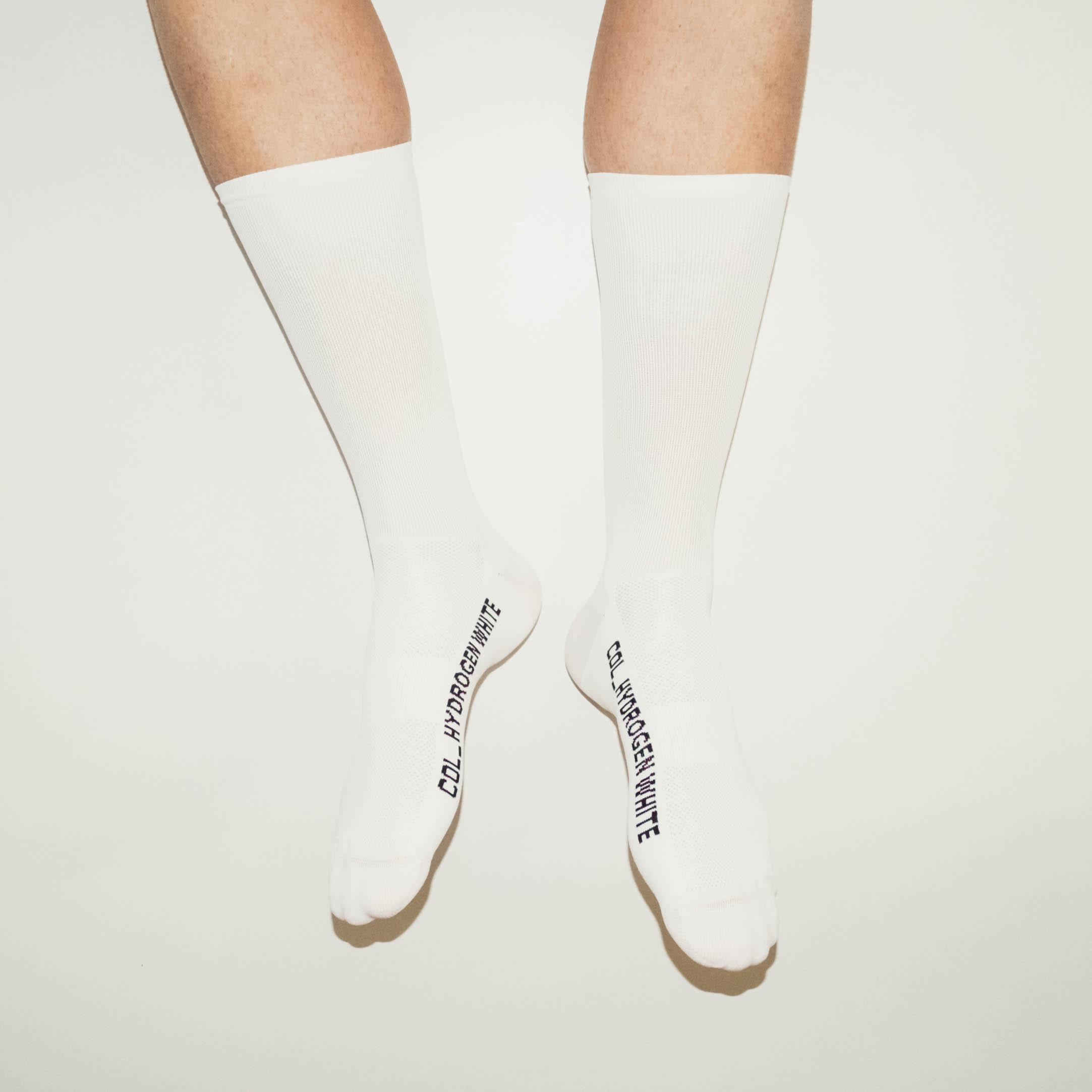
Tall Option
➕ Very tall
➕ Good and airy
➖ Limited colour options
If you're into tall socks then these should definitely be on your list. Only a smidge shorter than the Pro Team Extra Tall from Rapha, the POC Vivify offers a similar style package but with a bit more in the way of breathability. There's a more open mesh on the upper of the foot to allow it to breathe in the heat, though the cuff is of a similar thickness. Colour choices are limited though, and they are quite an expensive pair of socks, challenging some of the all-out aero options.
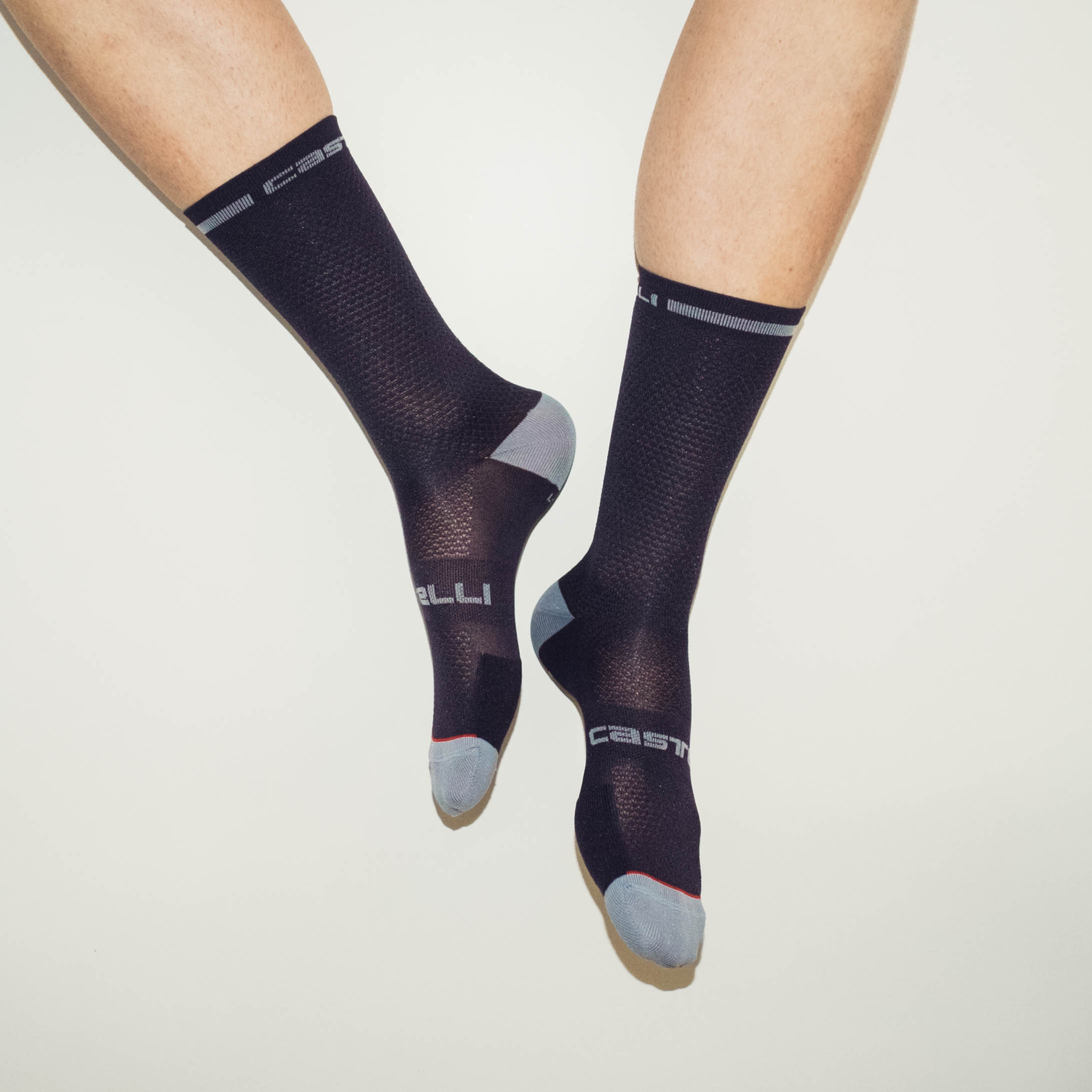
For Smaller Feet
➕ Mostly mesh construction
➕ Decent colour options
➖ Snug fit
The Superleggera from Castelli is a pair of socks for high summer, made mostly of mesh as per the Sportful Pro and the Assos Superleger (coincidently, or not as it means 'superlight'). If you want a lower sock for the heat, or colour options beyond the monochrome then these are the pair for you. A word of warning though, I'm a UK size 9 and was already maxing out the L/XL option, so if you've got larger feet than that then go for the Sportful Pro instead, it's similar but roomier.
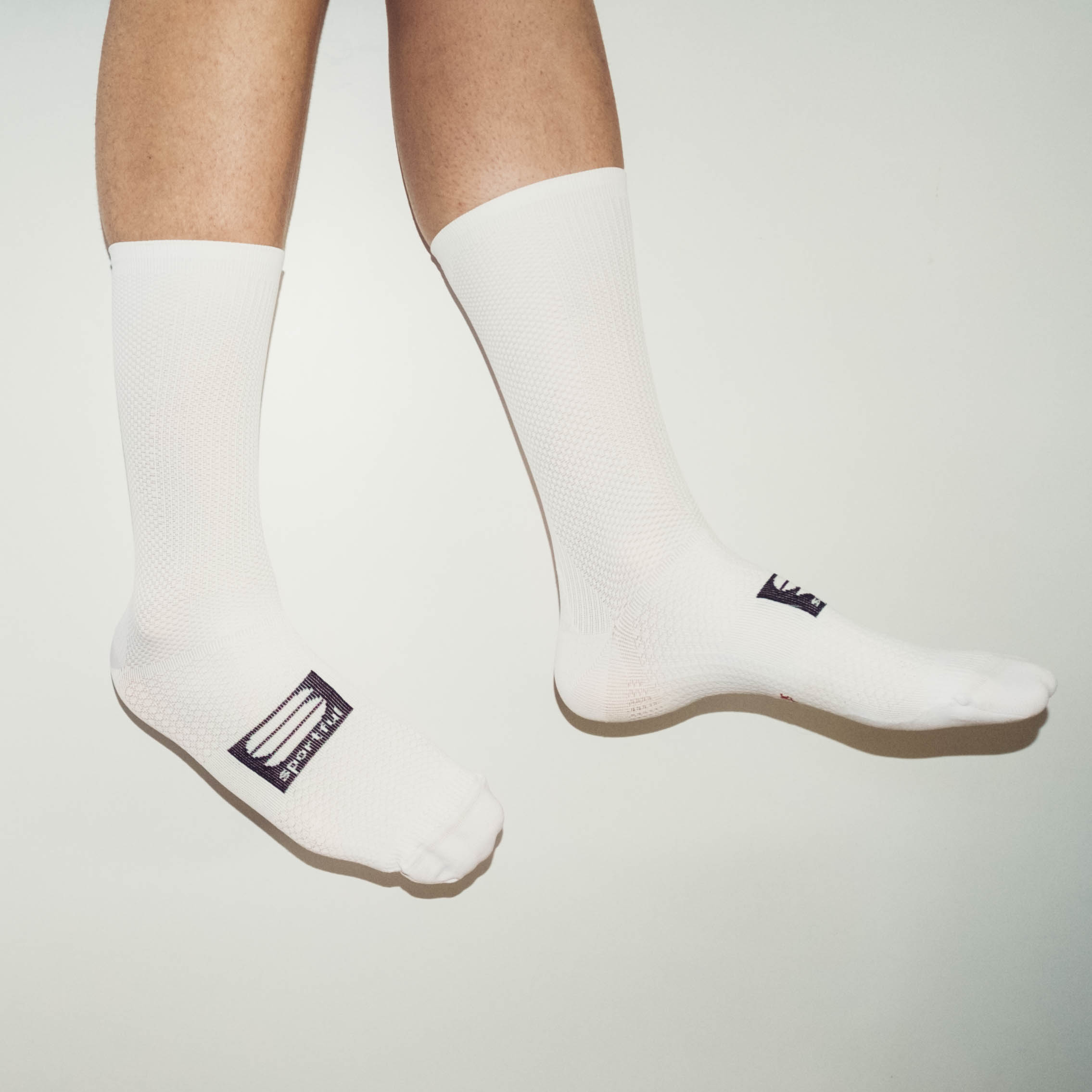
Another Hot Weather Option
➕ Very breathable
➕ Modern height
➖ Few colour choices
Think of these as a hybrid between the height of the POC Vivify, and the mesh construction of the Castelli Superleggera. The Pro socks from Sportful have a modern height cuff, but one that is almost entirely mesh save for the gripper at the top. Likewise, the sole is extremely open like the Assos Superleger, with only the outer side of the sole of a more durable material; the instep area is mesh. Another great option for those super hot days, especially if you want that modern tall sock look.
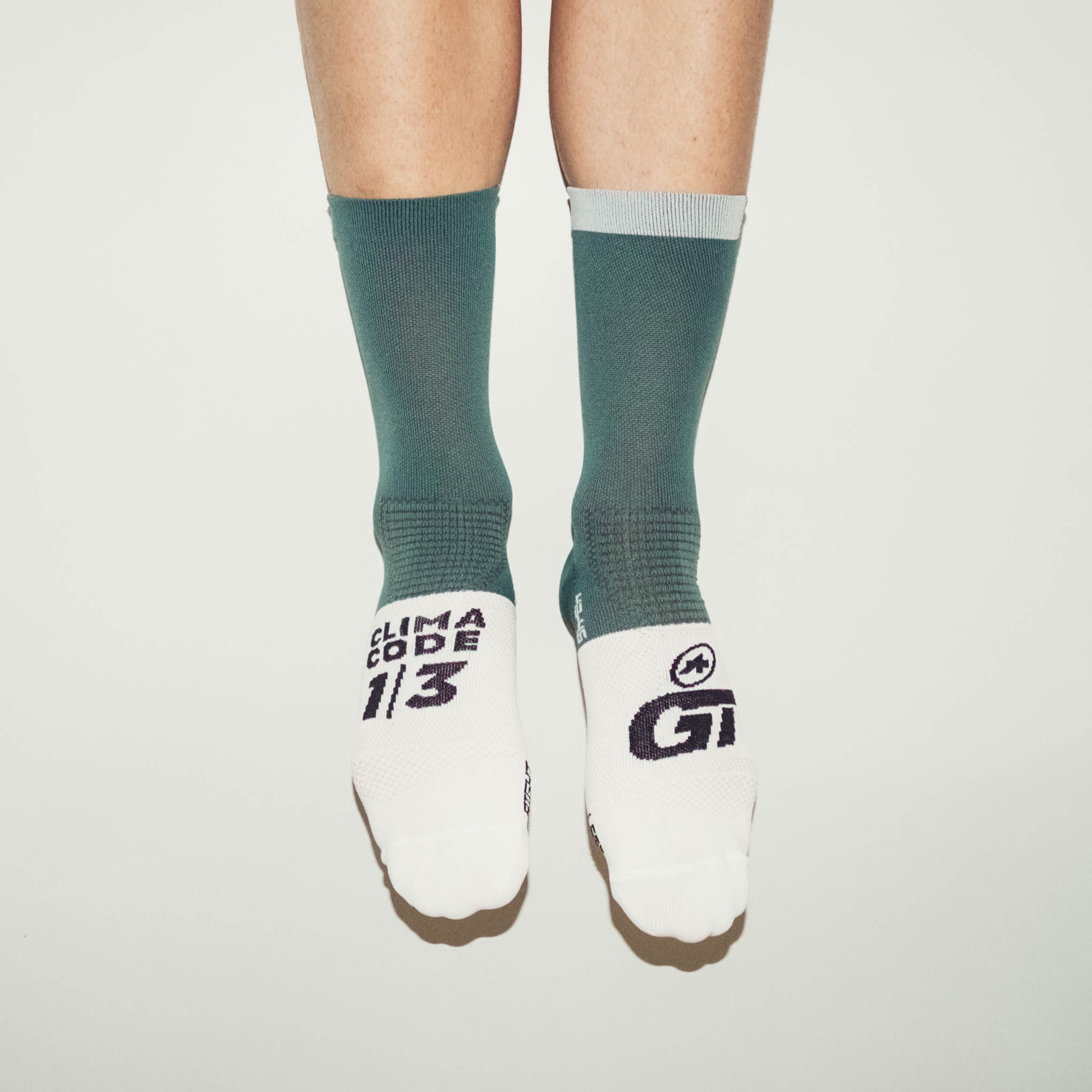
Hybrid Construction
➕ Good and breathable
➕ Normal-looking cuff
➖ Asymmetric design won't be for everyone
If you want a sock that'll keep your feet cool, but without that mesh look, the GT Sock C2 from Assos is for you. The foot portion is similar in construction to the Assos Superleger, so a very lightweight, open mesh that'll you'll struggle to overheat, while the cuff is a 'normal' close weave construction like the uppers of the Pro Team or Velocio Signature. The drawback for style gurus may be the lack of bilateral symmetry thanks to some details on one sock at the back that is mirrored on the front of its counterpart.
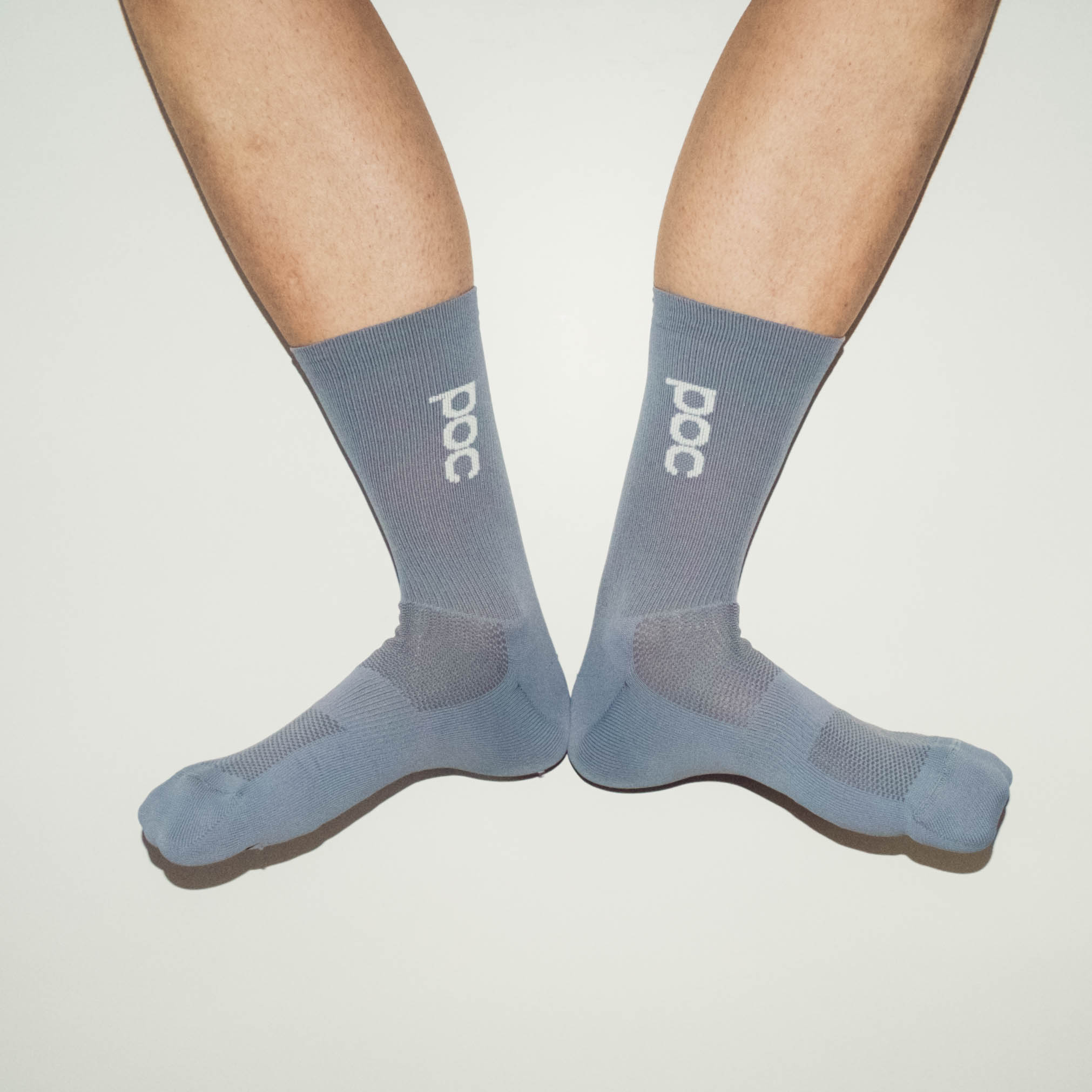
Great Mid-Height
➕ Thin overall but not meshy
➕ Colour options better than Vivify
➖ A little too stretchy
If you like the POC style, but the Vivify is a little too tall for your liking then the Soleus Mid is probably a good place to go next. The colour options are better, and it's a more 'normal' height. The overall construction is from a little thinner material than the Pro Team of Velocio Signature, so a little more breathable overall, with a mesh upper foot to help things along. On the flip side it does mean they're a very stretchy pair and getting them into just the right place at the start of a ride is a little more involved than with more snug pairs.
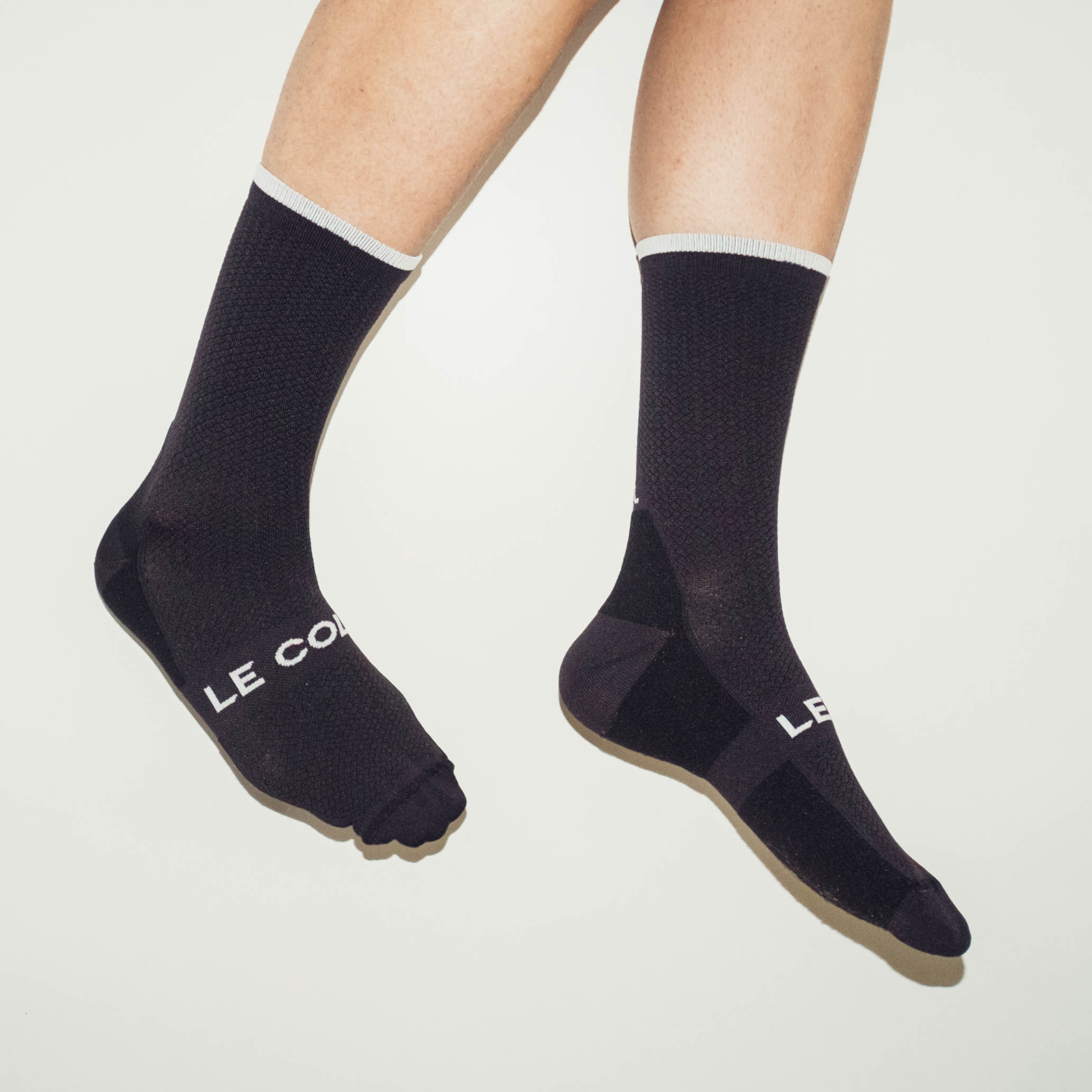
Best For Gravel
➕ Thicker sole
➕ Colour options
➖ Bit sweaty
We've yet to have 'gravel specific' trickle down properly to socks (though we do have gravel bike shoes), but the Le Col Cycling Socks would stand you in good stead if you're heading off the tarmac over the hotter months. The sole and heel are noticeably thicker than the competition, giving a bit of extra padding and comfort, as well as durability. This is counteracted by a upper and cuff with plenty breathable. Perhaps a little warmer than some of the mesh options, but nothing to concern you unless it's an absolute scorcher.
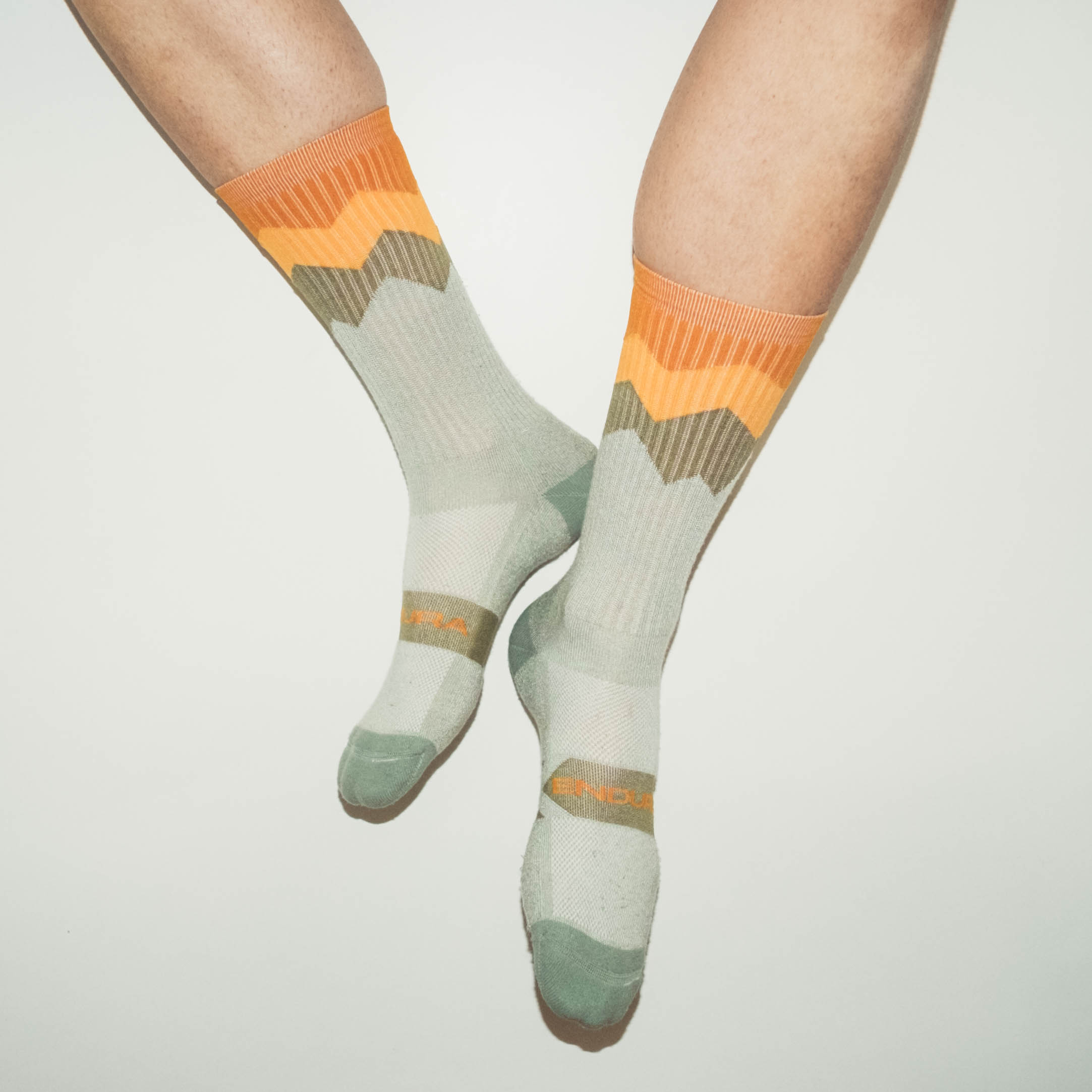
Another Gravel Option
➕ Ribbed cuff
➕ Plenty of colour options
➖ No good if you don't like the jagged design
Like the Le Col socks, these Jagged Socks from Endura have a slightly thicker sole and heel, though not quite to the same degree. What they have though, over the rest of the field, is a slightly different, dare I say 'mountain bike' aesthetic. If you're coming to gravel riding from the world of baggy shorts and want to keep the vibe alive then these are a great shout. The ribbed cuff keeps things very secure, and there are plenty of colour options, provided you're into the jagged design.
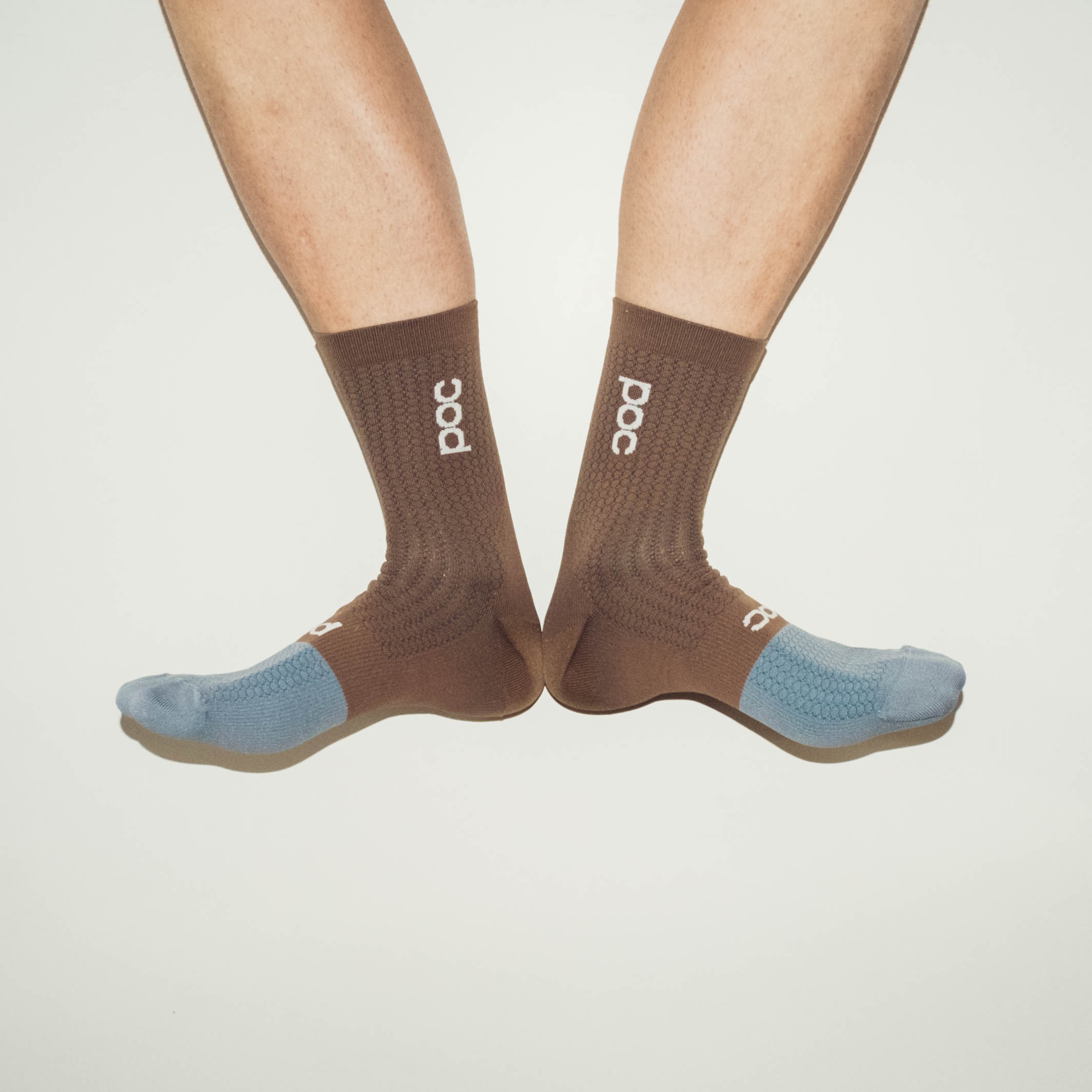
Short Cuff
➕ Durable and still breathable
➕ Not as snag prone
➖ Rather short for modern tastes
If your gravel riding takes in smooth, well-graded, open roads then you can easily opt for any of the lightweight options when the mercury rises. If you often find yourself coming into contact with vegetation, then the more mesh-heavy options pose an increased snag risk as you pass through. Enter the Poc Flair, which manages to somehow create an open, breathable construction without the snaggability. They're not quite as breathable as options like the Sportful Pro, but they do a good job nonetheless. They are rather short though by modern standards.
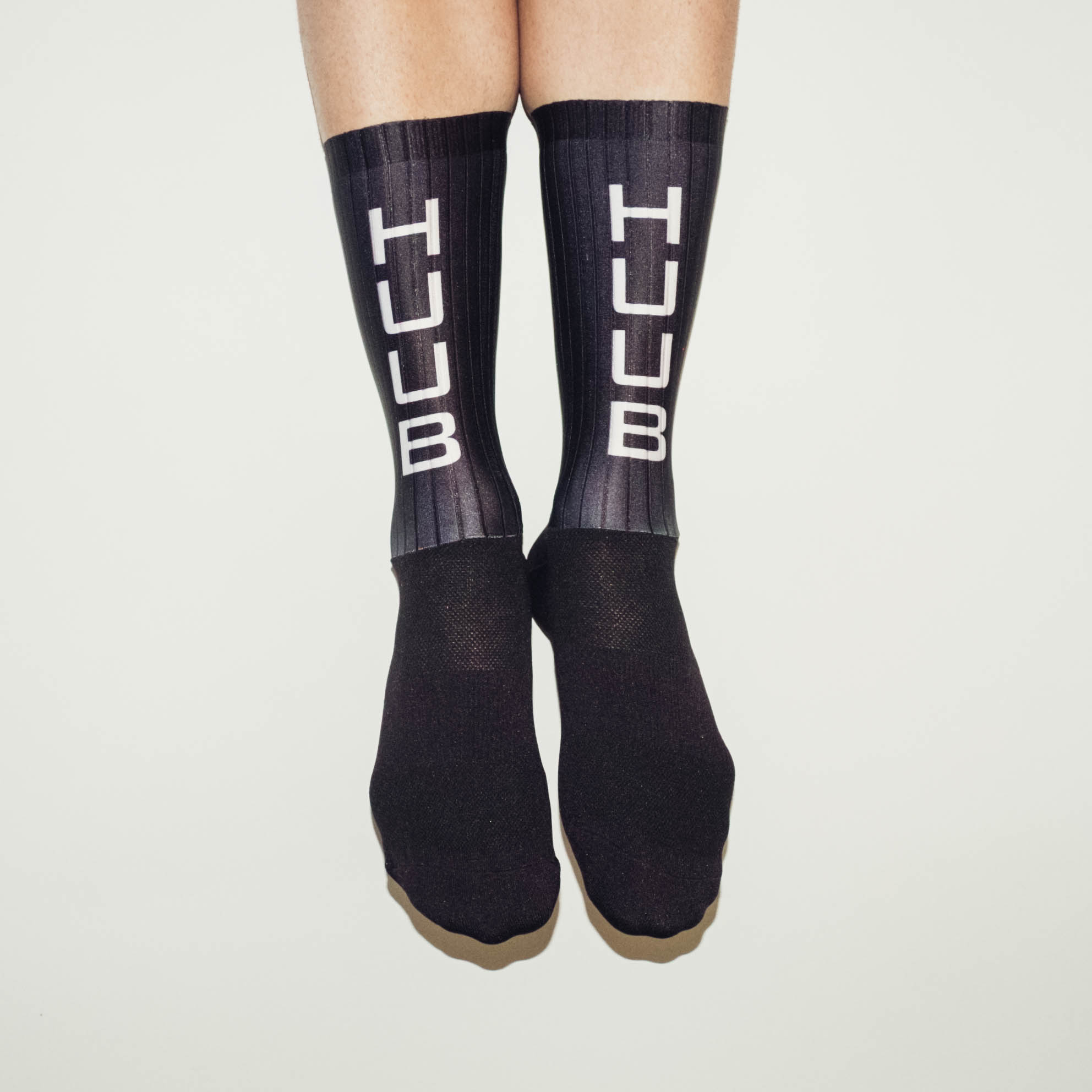
Best Aero
➕ UCI Legal
➕ Dan Bigham seal of approval
➖ Black only
If you're after aero gains for your feet then a pair of socks that has been designed and enhanced by Dan Bigham, Ineos Grenadiers aero wizard and former hour record holder, will probably be top of your list. These are tall, claim to save 5-8 watts, and are UCI-legal. Regularly used on the feet of the Huub-Wattbike team while smashing team pursuit records you can trust that these are a genuine pro piece of kit. They only come in black though, but you're not going to let style come before speed are you?
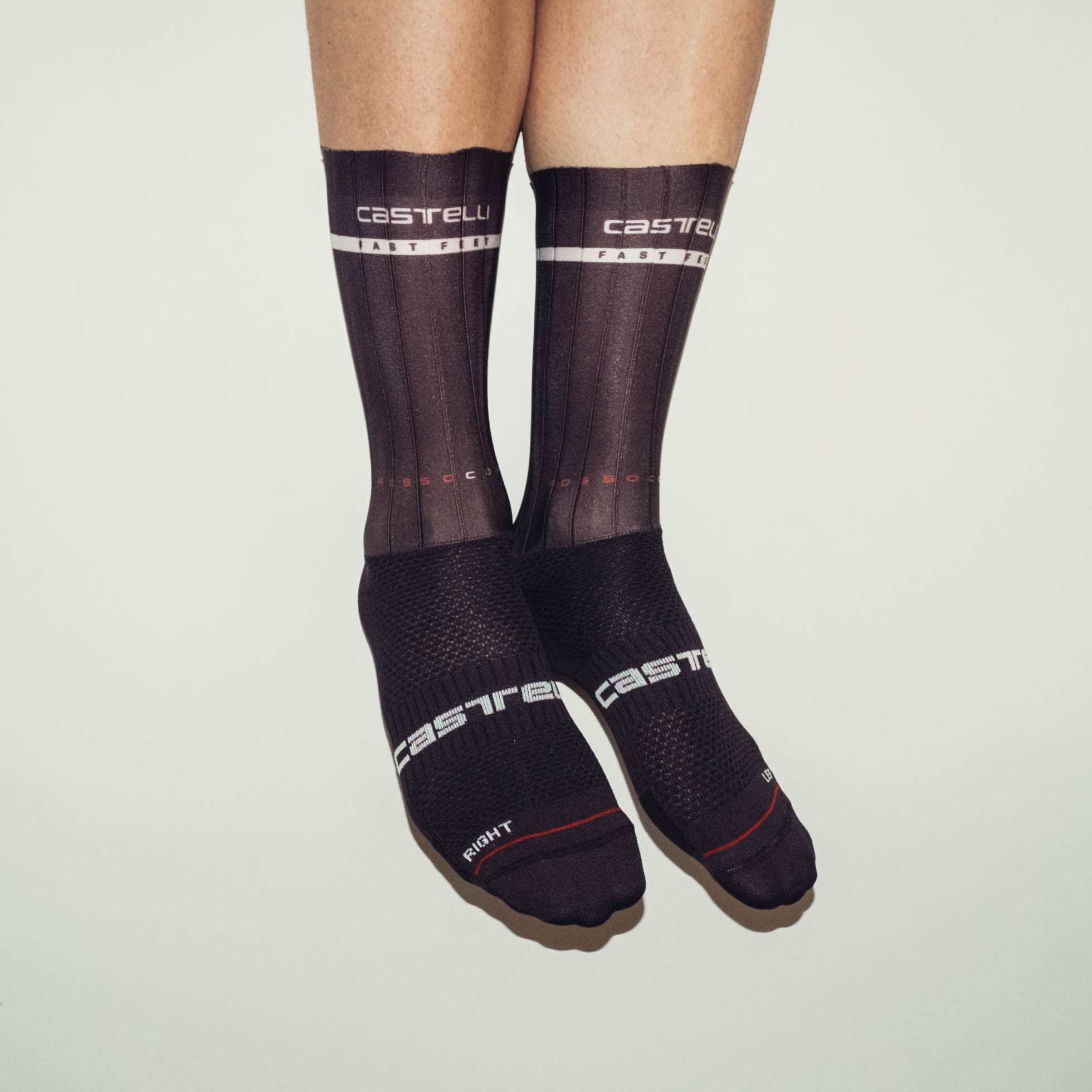
Aero And Breathable
➕ Breathable lowers
➕ Not crazy tall
➖ Silicon grippers are not as good as Huub or Le Col
As with all true aero socks, these have a tall, ribbed Lycra cuff. In this case, it's mated to the foot section from the Castelli Superleggera socks, so they're a more breathable option if you want speed gains on hot days. That being said, they do run small so probably not for anyone with feet larger than a UK9, and the silicone grippers don't feel as durable as those from Huub or Le Col. They are plenty sticky though, but it does mean they take a while to get on, so plan ahead.
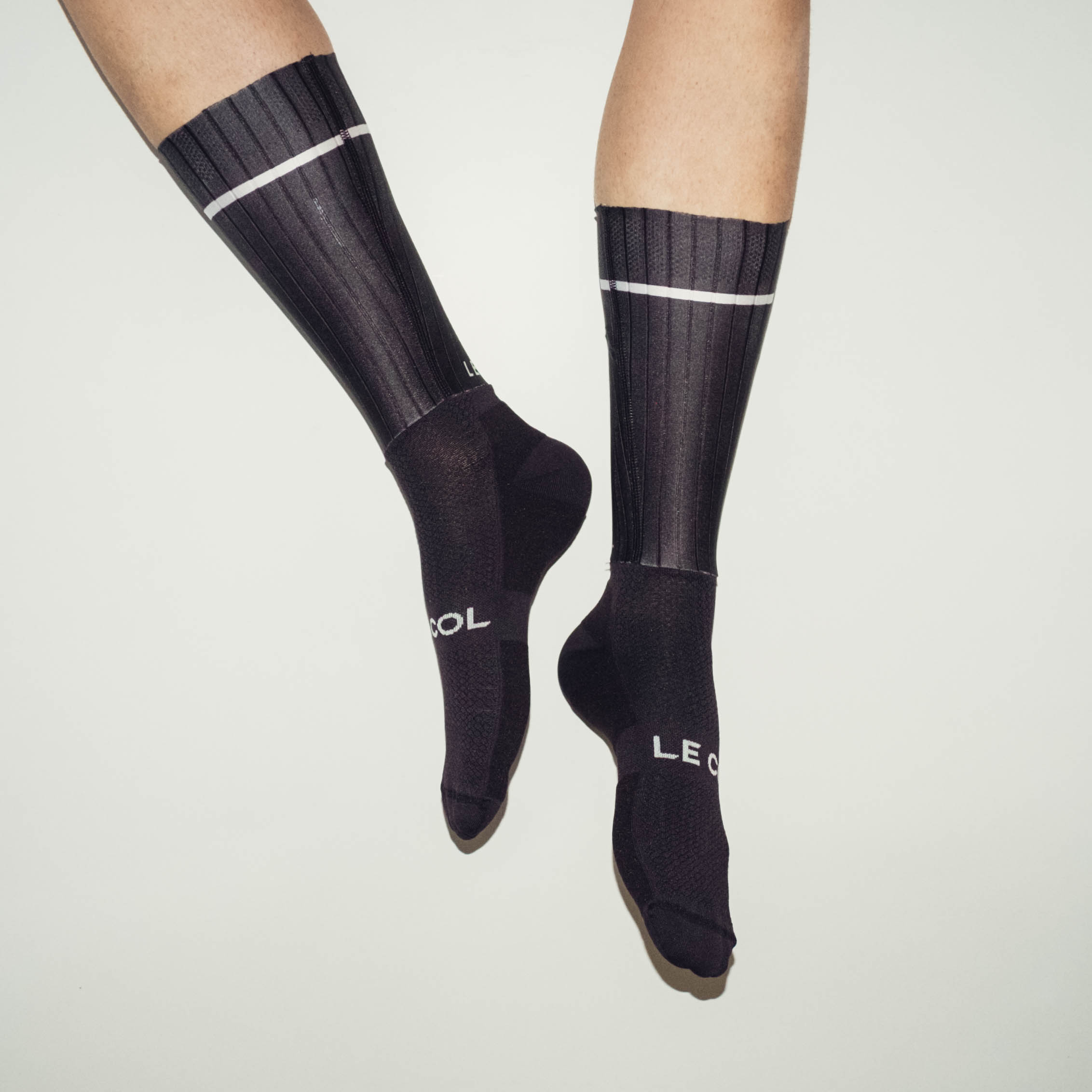
UCI Illegal
➕ Tall. Very tall.
➕ Colour options
➖ Touching UCI illegality
These are the tallest socks I could get my hand on, and feet in. They are probably going to be touching UCI illegality for some of you, or at least just look very very tall. That being said, they have very good grippers, similar to those from the ends of bib shorts, and come in colour options, even if that is only black, white, and yellow. The more cushioned soles, as per the Le Col socks may also make them more gravel suitable, but that'd be a bold move for anything outside of an FKT attempt.
How to choose the best cycling socks for you
Socks aren't really safety-critical, and outside of aero options do little to improve or detract from performance. This, combined with a relatively low financial barrier to entry means you can try things out, or use them to add a pop of personality to your outfit. The options above are what I think represent the best of the bunch, but if they don't float your boat then there are many other options out there, so how do you know what to get?
What is special about cycling socks?
The best cycling socks have to be thin enough to fit into the best cycling shoes, which tend to be relatively close-fitting. They have to be breathable to deal with the heat generated by exercise even on the hottest days, and they have to not fall down. As such they tend to be made from synthetic fibres rather than cotton, as this better handles moisture, and incorporates some degree of mesh into the weave to allow improved breathability. A strong gripper at the top of the cuff is standard, that's why even on wet days you'll never see them fall down.
Should I wear black or white cycling socks?
There are some who'll tell you one way or the other is the 'proper' way to do things, but you should always wear what you're comfortable in; what makes you happy. Socks are an easy, relatively cheap place to make a style statement, so don't get hung up on antiquated rules. The only time you should be told what colour socks to wear is if you're paid to wear them.
Should cycling socks be thin or thick?
Thin. As mentioned above this is because cycling shoes tend to be very close fitting. Even the best winter socks are still pretty thin, they just use more insulating materials like merino wool to add warmth without bulk. Bulky socks will compress your feet and risk blisters, or just be very sweaty.
Why do pro cyclists wear such tall socks?
It's called fashion, honey; look it up! Joking aside, beyond aero socks that are as tall as is legal to maximise the aerodynamic benefit there's really no need for socks to be a specific height. It's just what is fashionable at the moment, though it has the added benefit for the pros at least of providing a slightly larger canvas on the lower of each leg for larger sponsor logos. If the thought of a 30cm high sock fills you with dread then you're still allowed to go for shorter options.
What is the UCI rule about sock height?
Quite a lot, actually. Rule 1.3.033 states that:
Socks and overshoes used in competition may not rise above the height defined by half the distance between the middle of the lateral malleolus and the middle of the fibula head.
Further:
Modifications to the surface roughness of clothing are authorized but may only be the result of threading, weaving or assembling of the fabric. Surface roughness modifications shall be limited to a profile difference of 1mm at most.
So long socks with built-in aero features that aren't part of the weave are a no-no if the UCI is around.
How we test the best cycling socks
Not all socks are created equally and there is no better way to test socks than getting out and riding in them, washing them and repeating. I measured all the socks for height and took note of how they fit, the construction and how the materials feel. All the socks are tested with a range of different road and gravel shoes to ensure that the other are no issues or discomfort caused by seams.
While I didn't have to resort to submerging my feet in water like I did when testing winter socks, I ensured all the socks had been ridden outdoors in a variety of conditions. Hot weather rides determine the socks breathability and wickability while cooler or mixed condition days allow me to test the insulation properties of the socks. Finally, all the socks are inspected for damage post-ride and post-wash.
Testing is the backbone of the tech department at Cyclingnews and how we test is taken seriously, so read on to find out more.
The latest race content, interviews, features, reviews and expert buying guides, direct to your inbox!
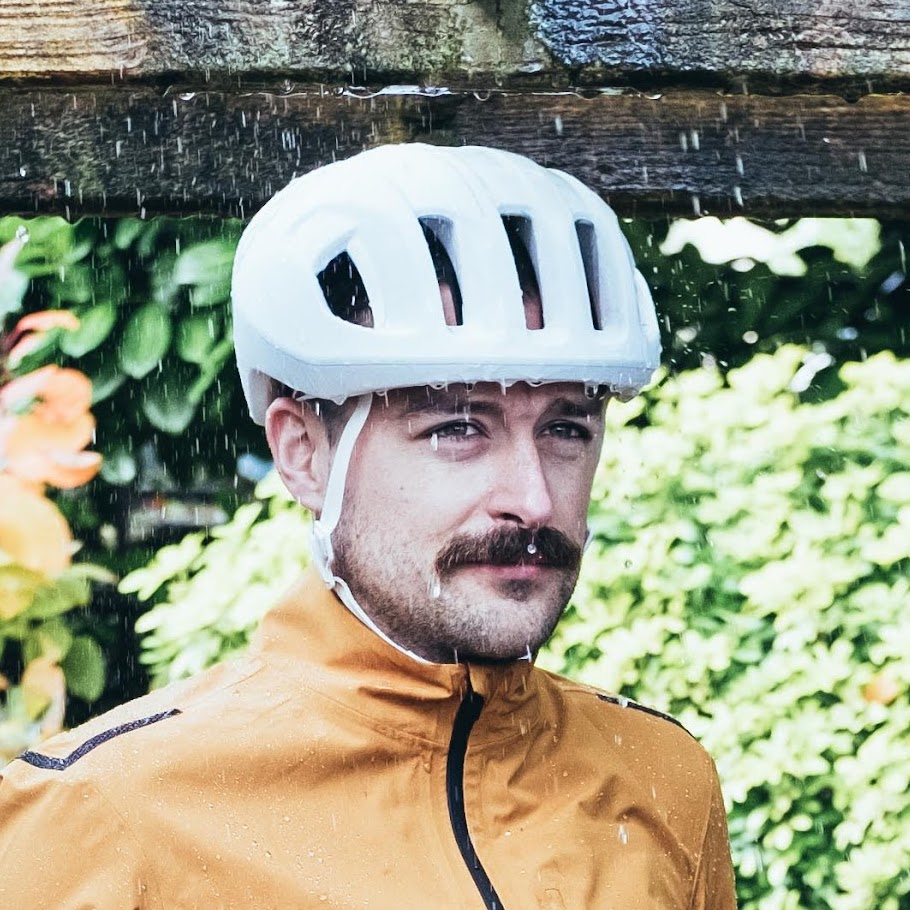
Will joined the Cyclingnews team as a reviews writer in 2022, having previously written for Cyclist, BikeRadar and Advntr. He’s tried his hand at most cycling disciplines, from the standard mix of road, gravel, and mountain bike, to the more unusual like bike polo and tracklocross. He’s made his own bike frames, covered tech news from the biggest races on the planet, and published countless premium galleries thanks to his excellent photographic eye. Also, given he doesn’t ever ride indoors he’s become a real expert on foul-weather riding gear. His collection of bikes is a real smorgasbord, with everything from vintage-style steel tourers through to superlight flat bar hill climb machines.
